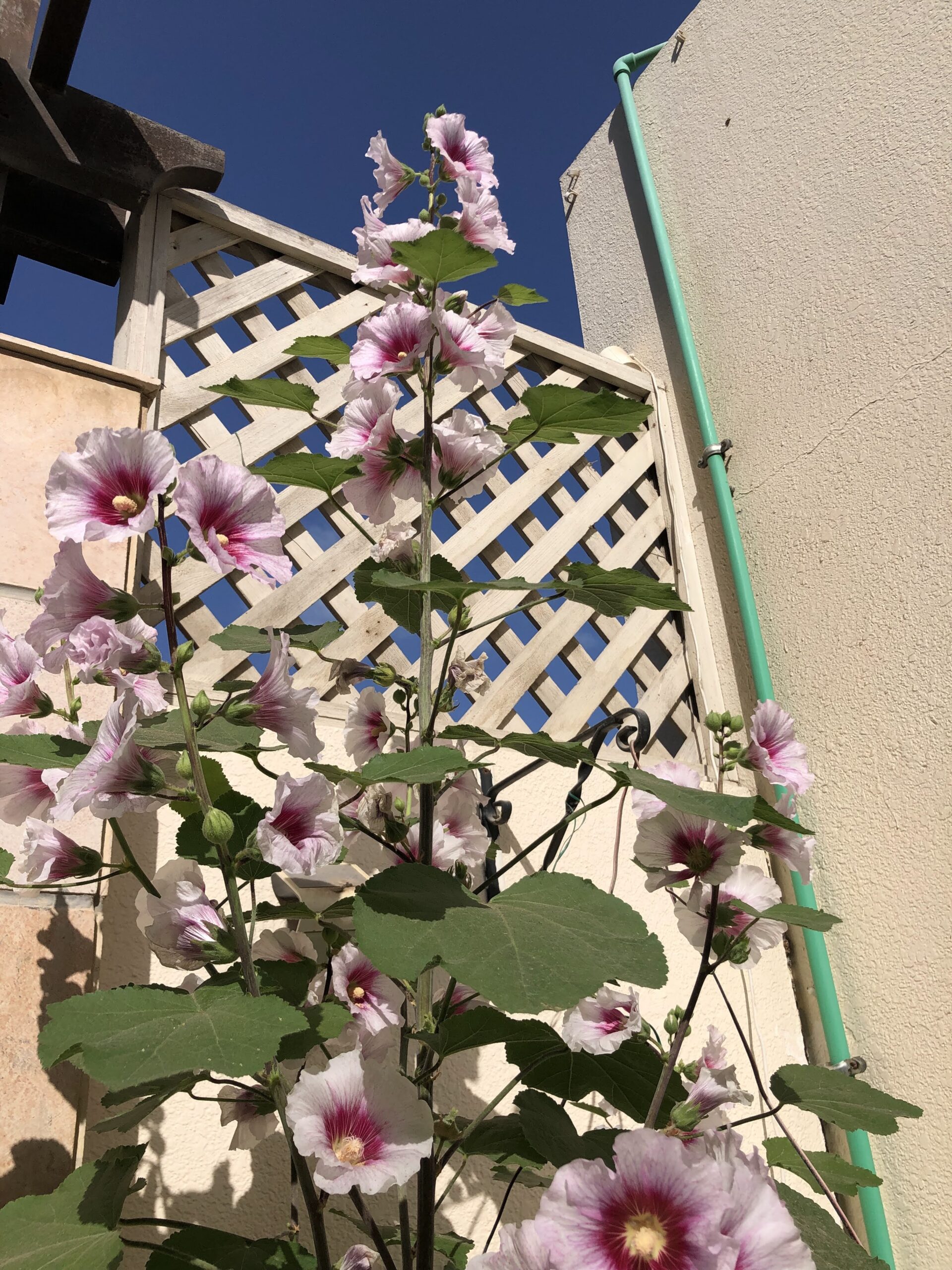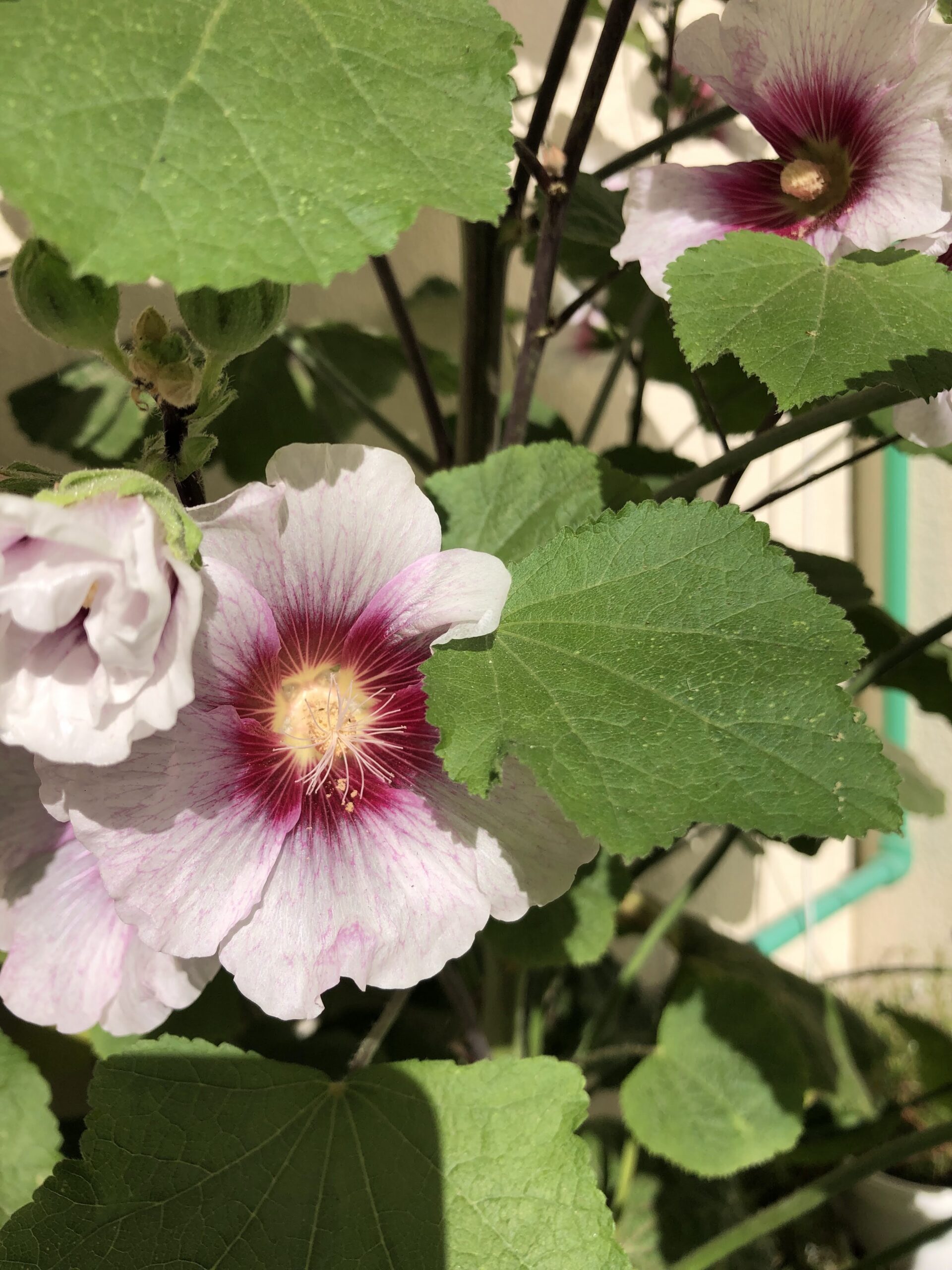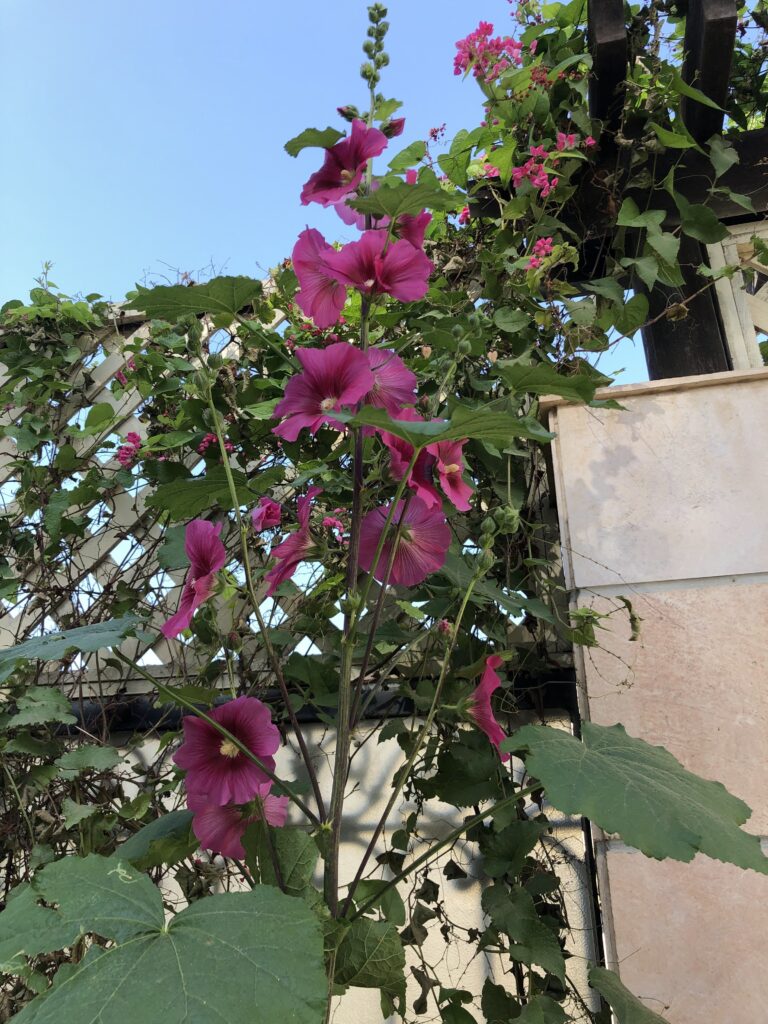Heavenly Hollyhocks!
Hollyhocks otherwise known as Alcea Rosea are one of the showstoppers of a Gulf Garden. Interestingly they can survive the summer and start flowering early in the season if they survive over the summer. Hollyhocks are mostly biennial which means that they grow and conserve energy one year and flower the next. However, the hollyhock varieties (seed and plants) available here behave like annuals so they flower the same year as you plant them. They are fairly easy to care for and produce bright cheerful flowers on tall stalks, creating joy and interest in your garden. They do really well planted along a northwest or west-facing wall. I start them from seed in September and normally they start flowering in February. Last year I experimented with leaving the hollyhocks in the same place in May after cutting them down to small shrubs. As soon as the weather changed at the end of September new foliage emerged and I had blooms as early as mid-October.


Alcea is a genus of over 80 species of flowering plants in the mallow family Malvaceae, commonly known as the hollyhocks. They are native to Asia and Europe. They are a close cousin to the Hibiscus which is a much-loved flower in many parts of the world. Although people might call them a poor cousin to the exotic Hibiscus, I feel they are far more dramatic in terms of looks on their tall stems and need far less maintenance compared to the Hibiscus (And I am a known Hibiscus fangirl)
Hollyhocks produce several flowers on tall stalks and each flower becomes a seed pod having at least 10 plus seeds. They are gorgeous to have in your garden as they attract multiple pollinators and are the host plant for the Painted Lady Butterfly Larvae. If you grow vegetables in your garden, having Hollyhocks nearby are great as they tend to attract bees and butterflies so your amount of produce actually increases.
They tend to reseed themselves so plant them where that is not a problem.
They also tend to be prone to Spider mite infestations as well as attacks by Mealybugs and Aphids. They also get affected by the Hollyhock Rust fungus so keep an eye out for that. That shows up as brown spots on the leaves.
I start them from seed every September and then transplant them to the pots once the Hollyhock saplings are about 12-14 inches in height. However, you can also get saplings in the nurseries easily if you don’t want to bother with planting seeds.
Hollyhocks need to be planted in a sunny spot with well-draining soil. They don’t need over-rich soil but benefit from having a dose of vermicompost and manure every six weeks or so. Also do remember to give them support and cut down the stalks when the flowers dry. If you have too many seed pods the flowering reduces so keep one stalk for seeds and cut down the rest.
There is also a multi petal variety but that is not available easily as a plant here. I am not successful in growing it from seeds this year.
Enjoy your hollyhocks.







Recent Comments